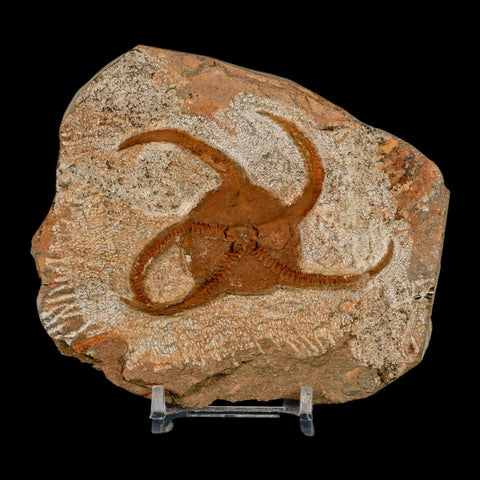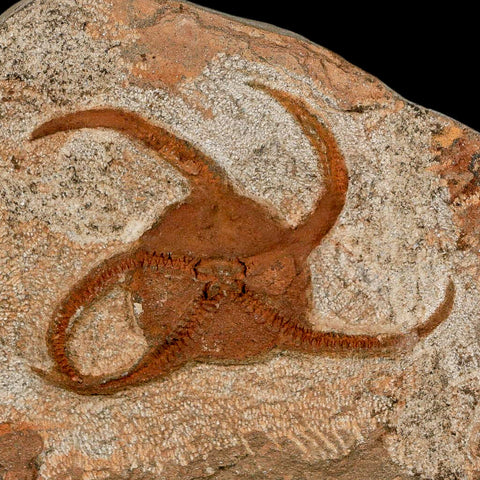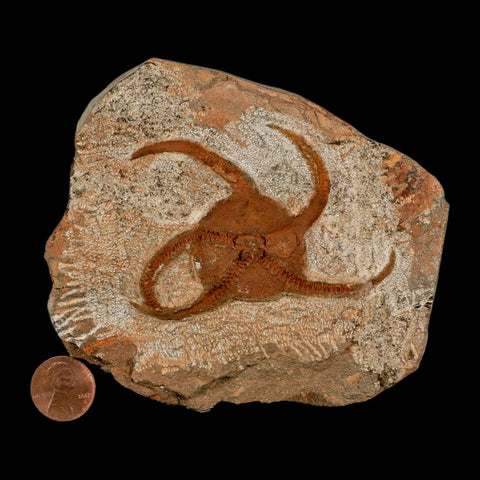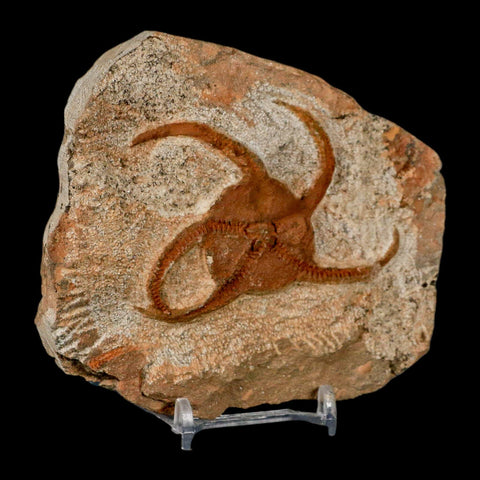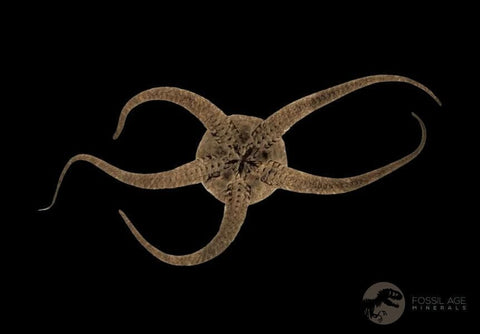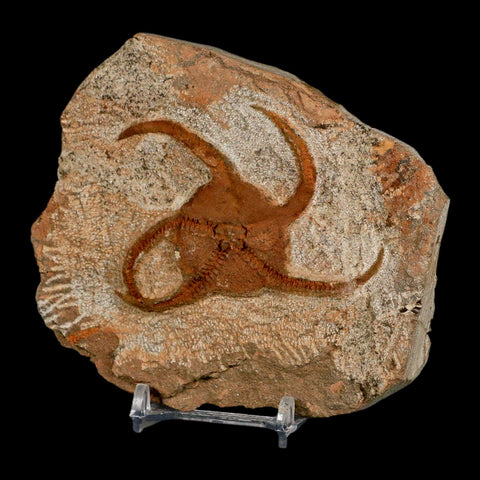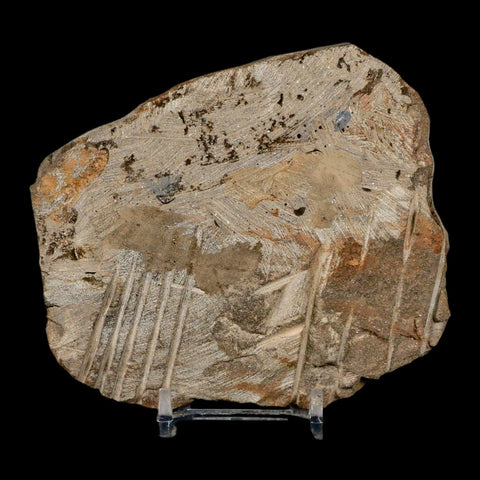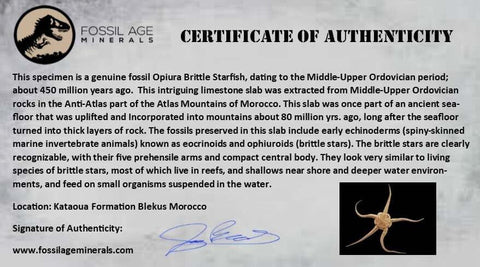3.1" Brittle Star Ophiura Sp Starfish Fossil Ordovician Age Morocco COA & Stand
Location: Kataoua Formation, Blekus, Morocco
Weight: 8.3 Ounces
Dimension: 4.3 Inches Long, 3.7 Inches Wide, 0.6 Inches Thick (Plate)
Starfish Dimensions: 3.1 Inches Long, 2.4 Inches Wide
Comes with a Certificate of Authenticity.
Comes with a Free Stand.
The item pictured is the one you will receive.
Brittlestar Ophiura Sp
This remarkable limestone slab originates from Middle-Upper Ordovician deposits, approximately 450 million years old, located in Morocco’s Anti-Atlas region of the Atlas Mountains. Formerly part of an ancient seafloor, it was elevated and integrated into mountainous terrain around 80 million years ago, after the seafloor’s transformation into dense rock layers. Within the slab are well-preserved fossils of early echinoderms, including echinoids and ophiuroids, or brittle stars. These brittle stars are distinguished by their five flexible arms and compact central disc, bearing a strong resemblance to their modern counterparts found in reefs, shallow coastal waters, and deeper marine environments where they feed on suspended microfauna.
Eocrinoids are more unusual, with long, thin, tapering stems and clusters of arm-like appendages at the opposite end. These animals are probably the Eocrinoid Ascocystites, a suspension feeder that would have extracted food directly from the water column, filtering out microorganisms with the help of those appendages.
Although eocrinoids are named similarly, they are not related to crinoids (sea lilies) and exhibit distinct morphological differences from both ancient and contemporary crinoids. Yet, akin to many fossilized crinoids, their elongated stems enabled them to anchor to hard surfaces and elevate themselves above the seafloor.
There appear to be several larger individuals along with several much smaller ones. Those smaller animals may be juveniles of the larger form or a different species. Do you notice how the smaller individuals often seem to be in close contact with the brittle stars? We are often led to wonder whether the brittle stars were feeding on the smaller echinoids.

Please be aware of the nature of fossils:
Being buried under the ground for millions of years under tons of pressure tends to be rough. No fossil comes out of the ground whole and perfect. Most fossils have undergone some restoration, while others are altered by man simply to enhance their presentation in different ways. The workers in Morocco do a very professional job of unearthing and preserving these natural treasures. These are part of the natural beauty of the fossil and are not considered defects.


